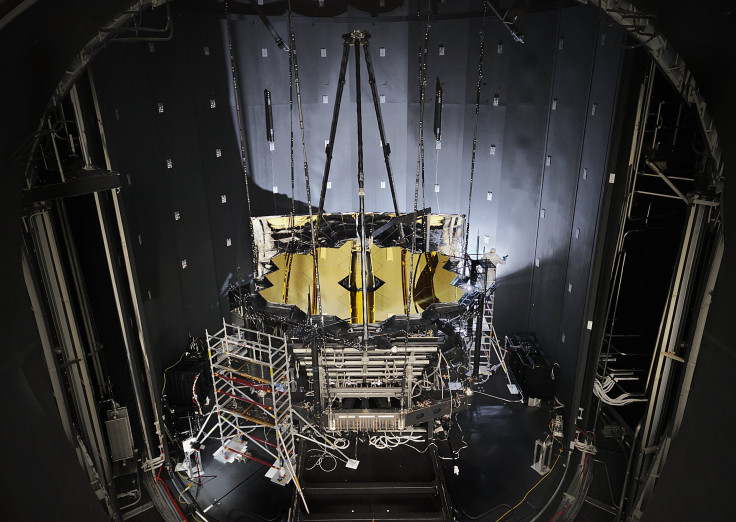NASA Space Telescope Survives Cryogenic Vacuum Chamber, Will Hunt Aliens

NASA released the James Webb Space Telescope from its cryogenic prison, ending about 100 days of testing the telescope’s ability to withstand the frigid temperatures it will encounter in space.
The frozen journey started in mid-July and ended over the weekend when scientists opened the door to the enormous chamber where the telescope had been chilling in a cryogenic vacuum, the space agency announced Monday. During its time in the chamber, at NASA’s Johnson Space Center in Houston, it rode out temperatures hundreds of degrees below freezing point, including as Hurricane Harvey raged outside and plunged much of Houston under floodwaters.
Once it’s in outer space, the telescope will work at an operating temperature of -387 degrees Fahrenheit. One research instrument on board is going to be even colder — it has a cryocooler that will keep it at a comfortable -447 degrees.
The icy temperature allows the telescope to better “detect the infrared light from very faint, distant objects,” NASA said.
During the cryogenic vacuum test, the experts were making sure that Webb’s instruments all worked under such harsh conditions, in preparation for the telescope’s expected launch in spring 2019.
“We were able to create deep space in our chamber and confirm that Webb can perform flawlessly as it observes the coldest corners of the universe,” cryogenic testing project manager Jonathan Homan said in the NASA statement. “I expect [Webb] to be successful … and has the chance to change our understanding of our universe.”
One of Webb’s biggest missions is to learn more about other worlds. It will investigate potentially habitable exoplanets to figure out whether they might contain water and what their atmospheres are made of. That may include the seven rocky planets in the Trappist-1 solar system, at least three of which might be in their star’s habitable zone — the distance at which just the right amount of heat reaches the planet to sustain water as a liquid.
© Copyright IBTimes 2025. All rights reserved.




















